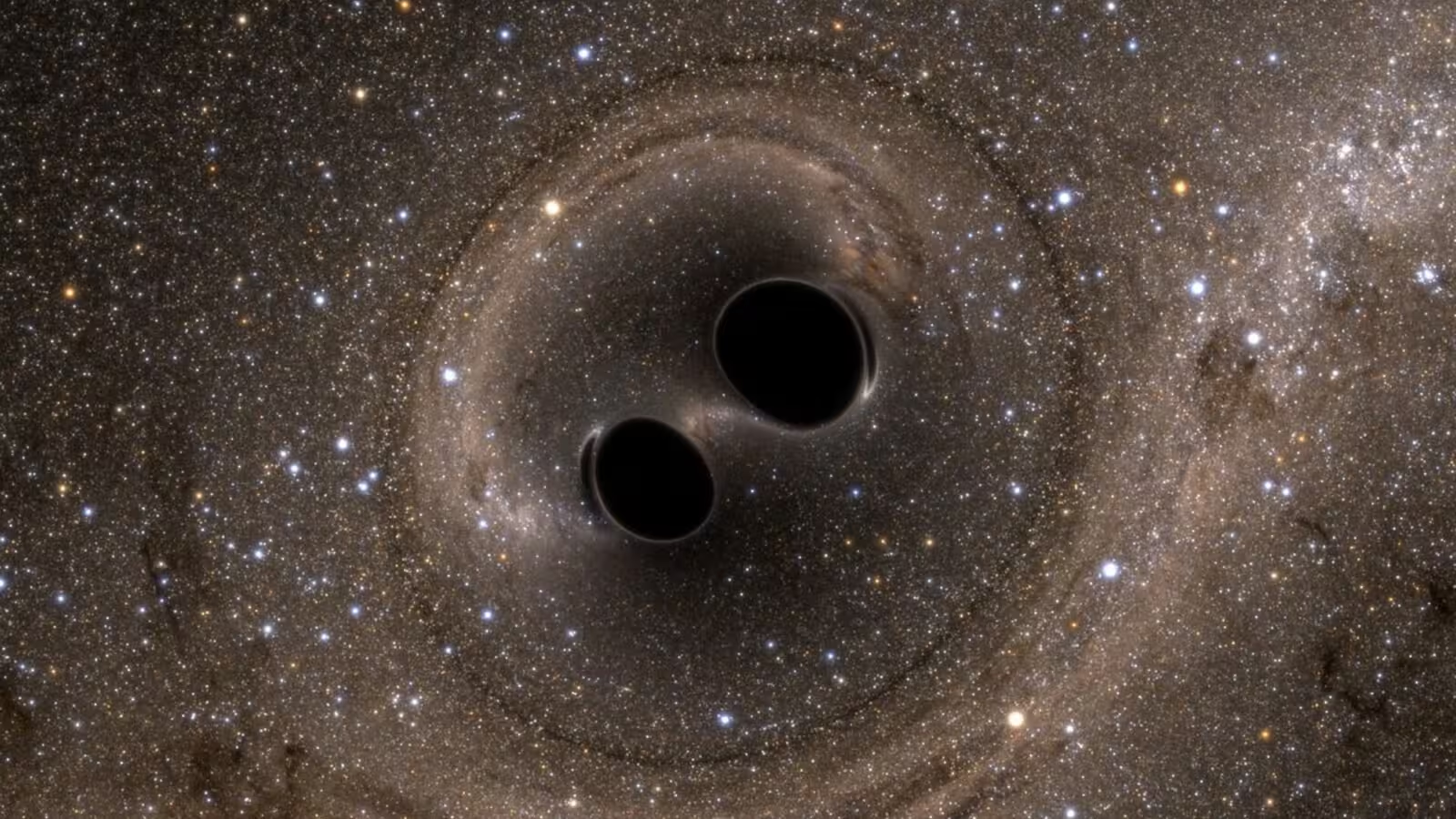4 Minutes
Breakthrough Discovery: The Largest Black Hole Merger Ever Recorded
A collaborative team of physicists from the LIGO, Virgo, and KAGRA gravitational wave observatories has announced the detection of the most massive black hole merger ever observed, shattering previous records and advancing our understanding of the universe's most extreme phenomena. The gravitational wave event, designated GW231123, was unveiled at the Edoardo Amaldi Conference on Gravitational Waves in Glasgow, Scotland.
This colossal collision resulted in a single black hole with a staggering mass approximately 225 times that of our Sun. Gravitational waves—the ripples in spacetime first predicted by Einstein—were generated as two massive black holes, weighing around 100 and 140 solar masses respectively, spiraled toward and ultimately fused with each other. The incredible scale of this event places it far beyond any black hole collision previously detected.
The LIGO, Virgo, and KAGRA Collaboration: Unveiling the Universe’s Cataclysms
The LIGO (Laser Interferometer Gravitational-Wave Observatory) project, alongside its European counterpart Virgo and the Japan-based KAGRA, forms the world’s leading network dedicated to gravitational wave astronomy. Their science relies on the use of ultra-precise laser interferometry, where powerful lasers detect minuscule disturbances in distance between mirrors set kilometers apart—signatures of cataclysmic events billions of light-years away.
LIGO operates twin detectors in Hanford, Washington, and Livingston, Louisiana. Advanced Virgo, located in Italy, expanded the detection network in 2016, while KAGRA in Japan broke new ground as both Asia’s first gravitational-wave detector and the first to operate underground, enhancing sensitivity by shielding from seismic noise. Construction of LIGO-India began in 2021, with activation expected after 2025, further enhancing detection power and global reach.
Over recent years, the consortium has documented dozens of gravitational wave events, including historic discoveries such as the first confirmed mergers of black holes and neutron stars, earning the prestigious Nobel Prize. Notably, in 2021, the collaboration identified the first-ever “mass-gap” event: a merger between a neutron star and a mysterious object neither light enough to be a neutron star nor heavy enough for a traditional black hole. This hinted at previously unexplored clusterings of mass in the cosmos—so-called mass-gap objects.
Scientific Implications and Theoretical Surprises
Prior to GW231123, the largest black hole merger was the GW190521 event in 2020, which resulted in a black hole around 140 times the Sun’s mass. The newly detected GW231123 event not only surpasses previous records for black hole size after a merger, but the black holes themselves were spinning at extraordinary rates—near the theoretical edge predicted by general relativity. This made analysis challenging and delayed the official announcement as extensive data validation and modeling were required.
The scale and dynamics of this merger challenge existing theories concerning the evolutionary pathways of stars and black holes. Under current astrophysical models, black holes of this size should not form directly from the collapse of a single star (core-collapse supernova). Instead, GW231123 is likely a “hierarchical merger”: each black hole was the product of earlier black hole mergers, meaning these titanic objects are the result of generations of cosmic collisions in dense stellar environments such as star clusters.
“This discovery of such a massive and highly spinning system poses significant challenges, not only for data analysis but also for theoretical models of black hole formation and gravitational waveform prediction,” said Ed Porter from the National Centre for Scientific Research (CNRS) in Paris, highlighting both the technical and theoretical frontiers advanced by this result.
Future Directions in Gravitational Wave Astronomy
The detection of GW231123 marks a milestone in gravitational wave astronomy, opening new questions about the origins of the universe’s most extreme objects. As LIGO, Virgo, and KAGRA continue to enhance sensitivity and expand their geographic coverage, more discoveries of massive, spinning, and hierarchically-merged black holes are expected. These findings will not only refine our models of black hole growth and stellar evolution, but also further probe the boundaries of Einstein’s general relativity and our grasp of cosmic history.
Conclusion
The GW231123 merger stands as a landmark achievement in the ongoing exploration of the universe’s most violent and mysterious events. By pushing the limits of observational astronomy, the LIGO, Virgo, and KAGRA collaboration has deepened our comprehension of cosmic evolution and opened new avenues for research into gravitational waves, black hole physics, and the fundamental laws that govern space and time.
Source: arstechnica



Comments